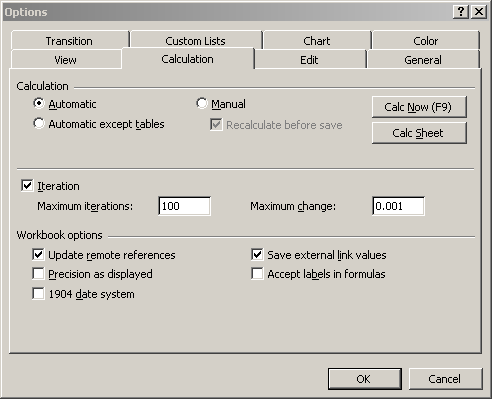
How often have you found yourself tweaking the assumptions of a model to finally reach satisfactory results, but then to belatedly realize that you haven't pressed that macro button that will initiate the calculations to converge the results to the right solution-invalidating all the trials you were trying to do? But wait, it happens to the best of us.Ĭlosed form solutions are probably the most elegant of all four techniques, but they aren't possible in most practical cases-where finding a solution to an algebraic expression relating many variables over a large number of time periods is simply impossible without iterations. Therefore, their use to solve circularity problems will put the user at the mercy of his/her memory to remember when to execute the macro or initiate the goal seek procedure. However, they are considered static procedures-if the inputs change, the procedures have to be repeated. Goal seek and VBA macros are extremely powerful tools in Excel. Once you enable iterations to allow Excel to calculate deliberate circular references, it becomes very difficult to distinguish between “mistakes” that have created inadvertent circular references and the intentional circular reference-since Excel won't warn you about the existence of such circular references.

They can be very memory intensive, as Excel will trigger recalculation of all the dependent worksheets-on each iteration-every time something changes in the model.

The drawbacks of circular references are very well documented in Jonathan Swan's Practical Financial Modeling, A Guide to Current Practice-another authority on the use of spreadsheets as a financial analysis tool-and summarized here: The FAST standard-published by the FAST Standard Organization, a nonprofit promoting standardization in financial modeling-article 1.01-11 states clearly to “ Never release a model with purposeful use of circularity”. The first two techniques are somewhat risky and inefficient, the third is rarely practical in real world scenarios and the fourth is recommended.Ĭircular references are usually considered by experts a bad thing to have in a spreadsheet model. There are four basic approaches to handle circular calculations in Excel: So how do we typically solve such kind of modeling problems? At the same time, without the balance sheet being ready, we can't figure out the interest expense associated with the amount of external financing-an item required to prepare the income statement.

We all know that Assets should always equal Liabilities and Stockholder's Equity, don't we? But in order to prepare the balance sheet we need to prepare the income statement-since retained earnings should be carried to the balance sheet from the income statement. The most common of them is balancing the balance sheet. Many finance problems inherently involve circular calculations.


 0 kommentar(er)
0 kommentar(er)
